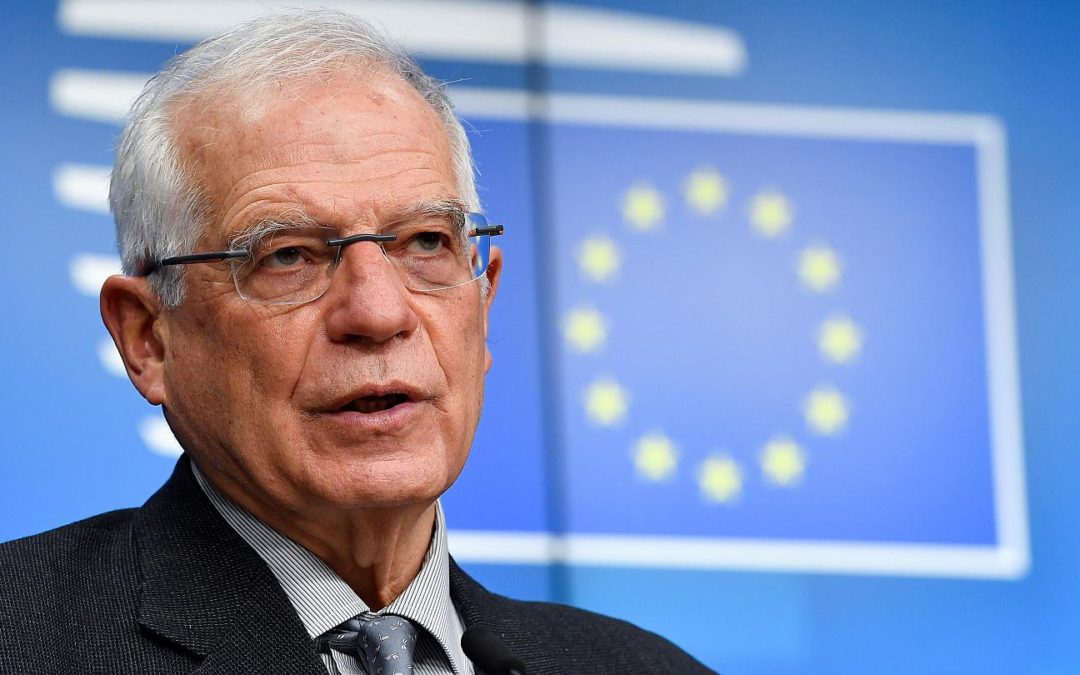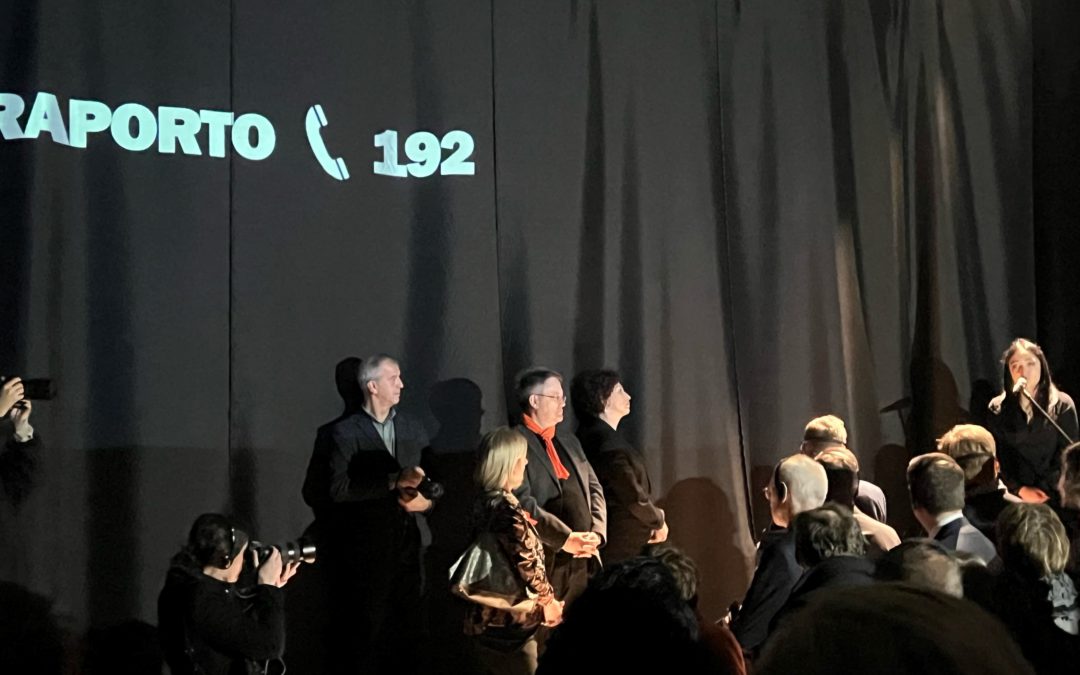The ancient history of Kosovo is often fiercely debated, which often leads to anger, confusion and division. Professor Edi Shukriu, a member of the Academy of Science and Arts of Kosova, is doing her best to set the record straight.
Born in Prizren to a Catholic mother and a Muslim father, Shukriu has always been aware of the many layers of culture in Kosovo, and she refuses to give one narrative more credence than another.
“Everyone from Kosovo likes to start from ‘O’. This is problematic for archaeology,” Shukriu said.
She pointed out that “Kosovo” is the Serbian spelling for the country, so some people tend to focus on history in the context of Serbia and Kosovo, not what came before. But Shukriu said ample evidence has been unearthed in fieldwork and research by her, and by others, that show the cultural history of Kosovo is substantial, and transcends any modern debates. Shukriu has studied the civilizations of Rome, Illyria, Dardania and Turkey — all predate, by the more than a millennium, the cultural claims, myths and struggle for ownership of history between ethnic Albanians and Serbs.
“In general, I like heritage. I was never educated to separate one heritage from another. Albania is my heritage, Serbia is my heritage, and Rome is my heritagetoo,” Shukriu insisted.
Shukriu’s father was a director of archaeological studies in Prizren. Her house was near Sinan Pasha Mosque and Prizren fortress. Her home also was very old and had had many previous residents before she was born.
“It was a combination of my father’s influence and growing up in a city with a rich history that motivated me to study archaeology.” Shukriu explained.
Shukriu is a respected academic around the world. She has authored and co-authored many books and academic journals, along with published works of poetry and creative writing. Today, however, Shukriu has her mind strictly on archaeology for Kosovo and answering the questions surrounding these ancient sites.
Ulpiana, on the edge of Prishtina, is an ancient site that has been known for nearly 60 years, and Shukriu has invested many hours there. Remnants of Roman columnsThe Ulpiana dig dates from the Roman and Byzantine eras. It functioned as a RomanEmpire crossroads, especially leading to the east, and later was a crossroads on Byzantium’s route west.
The site was near a prominent mining area known for its precious metals, stones and fertile land. During the Roman occupation, Ulpiana was one of the most traveled routes between Rome and Constantinople, according to the site’s project director, Milot Berisha.
Berisha explained that until Shukriu and her team arrived at Ulpiana in 2006, there were “systematic excavations of a preventive character,” done by the government in the days of Tito and Milosevic. Finding any type of historical evidence that refuted the Serbian historical narrative of Kosovo during those years was a potential problem.
One site in the vicinity of Prishtina is a prime example of the preventive excavations. The Tjerrtorja, where the iconic figurine of Prishtina’s goddess was found, was first excavated in 1953. After the goddess and a few other smaller pieces were discovered, the land was quickly privatized and a textile factory was built over the excavation site.
Neither Berisha nor Shukriu believe that there will be any further excavation of the Tjerrtorja, since the factory still stands on the site. The Tjerrtorja is not an isolated example. Many excavations were halted throughout Kosovo, meaning much of the country’s history remains unseen and unstudied. Berisha noted that during the war, most Kosovar archaeologists were kept on the perimeter of any type of dig that happened under Serbian occupation, and weren’t allowed to examine any of the findings. That was one of the main reasons that sites like Ulpiana remained mostly untouched for more than a half century.
Berisha was studying at a university in Tirana at the time of the war. Shukriu, on the other hand, found herself in the middle of the conflict. She was teaching at the University of Prishtina at the beginning of Serbia’s increased dominance of Kosovo. Shukriu recalls many professors, herself including, getting fired for refusing to teach under Serbian curricula. Shukriu said she was also beaten by Serbian police.
“They hit me on the hands and struck my body with clubs. I was bleeding and had several bruises. We were still very calm and peaceful, to save things from happening again,” Shukriu said. “Serbs still haven’t asked for forgiveness… but the war was not one-sided. There were Albanians killing Serbs who had nothing to do with the deaths of families, and there were Serbian students with knives calling for the death of Albanians at the University of Belgrade,” Shukriu explained.
Immediately after the 1999 war, Shukriu worked in the government with the intention of creating the framework of positive reactions between Serbs and Kosovo Albanians.
“We wanted to respect democracy, and respect what the Serbians had,” she said.
Archaeologist Edi Shukriu
Shukriu was a member of the Assembly of Kosovo for eight years, co-chair for the department of culture for UNMIK for two years. For four years, she also served as the President for the Committee of Culture, Youth, and Sport of the Assembly. She was the founder of the Women’s Forum of the Democratic League of Kosovo and currently serves as the Democratic League’s Vice President. Due to Shukriu’s political connections, she has been able to get the Ministry of Culture, Youth, and Sport to support the various archaeological expeditions.
“Dr. Shukriu is an example of someone who used their political influence for good,” said Berisha.
In 2006, ground was broken at Ulpiana. Shukriu and her team began unearthing the ancient Roman and Byzantine municipium, near the ethnic Serb enclave of Gracanica. One of the fortifications found at Ulpiana Ten years later, Berisha and his team have uncovered several different structures at the excavation site.
They have found a basilica with an octagonal baptistery, another basilica that was fortified at some point, city walls, city gates, large burial grounds,bones, and more.
“Only 3 percent of the city has been uncovered. There is still a lot of work that we have to do over the next few months,” explained Berisha.
The site is under the protection of Serbs, though this is not an issue as Berisha and other archaeologists at the site speak Serbian and even employ Serbians to help with the excavations. The project is fully funded by Kosovo’s Ministry of Culture, Youth, and Sport. In fact, the Minister Kujtim Shala has been to the Ulpiana site several times.
“He expects great results from this place,” said Berisha, smiling as he stared out at he diverse group of people actively working to uncover and restore beautifully preserved masonry and floor mosaics.
“Our goal is not to say one group is right about history and the other is wrong, we are simply trying to uncover the truth of what life was really like before our ancestors showed up. Roman history is everyone’s history,” Berisha added.
“Serbian culture and Albanian culture cannot be divided,” Shukriu said, explaining that there is too much work to do and so much to discover, it is possible for cultures to coexist in peace, no matter what bad blood lingers from the past. “The war is over. It has been over. We need to focus on bringing people together,” Shukriu added.
“We have not wanted to politicize the site. The Minister likes that we are promoting a ‘common heritage’ among the people,” according to Berisha.
Thanks to their efforts at repairing relations between ethnic groups has, the Ulpiana site has had “multi-ethnic camps” during the past three years. These camps bring together Serbs, Albanians, Roma, Gorani.
“The workers here have no problems with each other. I can speak clearly to all groups represented at our site, and as you can see they have all done great work,” Berisha said, pointing to the revealed ruins.
Archaeologists and other workers unearth precious bits of Kosovo’s ancient history in Ulpiana.
The problems lie with natural obstacles. Water and erosion have worn most of the ancient Roman ruins away, so Berisha and his team are working against the clock to preserve the site, since only 3 percent has been discovered.
Berisha is working with the Ministry to make the Ulpiana site into Kosovo’s first archaeological park. He hopes that it will be ready to be open to the public by the end of autumn.
Shukriu wants to see more cooperation with businesses and specific archaeological excavations, in order to generate more notice and interest.
“We had wanted to build a hotel nearby Harilaq, since it is so close to the airport. We had hoped that people would stay at that hotel and want to go see Harilaq since the two would have been so close,” she explained.
Despite some initiatives not going as originally planned, Shukriu, Berisha, their students and volunteers, are diligently laying the framework of an accurate and evidence-based historical narrative.
“Milot is very passionate about the site. He comes here even when people aren’t working. Cold or hot, he is here. He is very dedicated, it is an inspiration to all of us,” said Arianit Buqenca, a professor of archaeology in Prishtina.
“Dr. Shukriu is one of the best minds that Kosovo has,” added Valon Shkodra, a former student of Shukriu who is a curator at the Ethnological Museum of Kosova in Prishtina. “She is strong and she can work with many different people.”
(Houston Vick was a reporting intern at KosovaLive this summer in collaboration with Miami University in the United States.)








